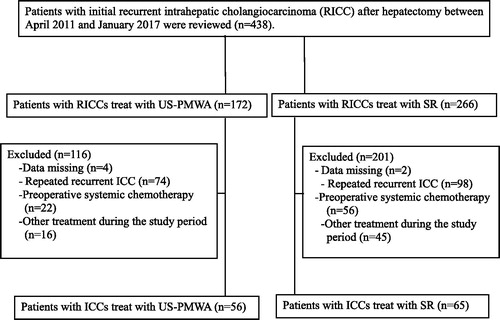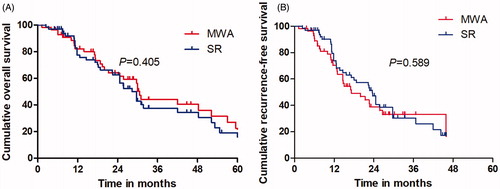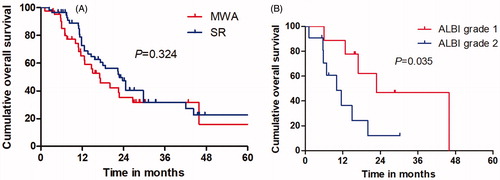Figures & data
Figure 1. Flow diagram shows exclusion criteria in patients with recurrent intrahepatic cholangiocarcinoma (RICC). SR = surgical resection, MWA = microwave ablation.

Table 1. Baseline characteristics of patients undergoing MWA and SR.
Table 2. The changes of liver and renal function before and after treatment in ICC patients.
Figure 2. The cumulative OS and RFS rates of 121 patients undergoing percutaneous microwave ablation and surgical resection for recurrent intrahepatic cholangiocarcinoma after hepatectomy (A). The cumulative OS rate between two groups; (B). The cumulative RFS rate between two groups.

Figure 3. A graph show that the cumulative OS of RICC patients with ALBI grade 1 between microwave ablation group and surgical resection group. B graph show that the cumulative OS of RICC patients with ALBI grade 2 between microwave ablation group and surgical resection group.

Table 3. Univariate analysis of prognostic factors for survival.
Table 4. Multivariate analysis of prognostic factors with cox proportional hazards model.
